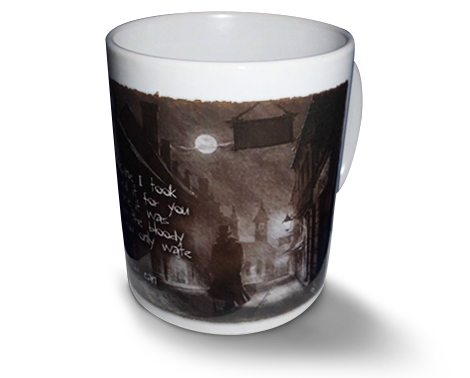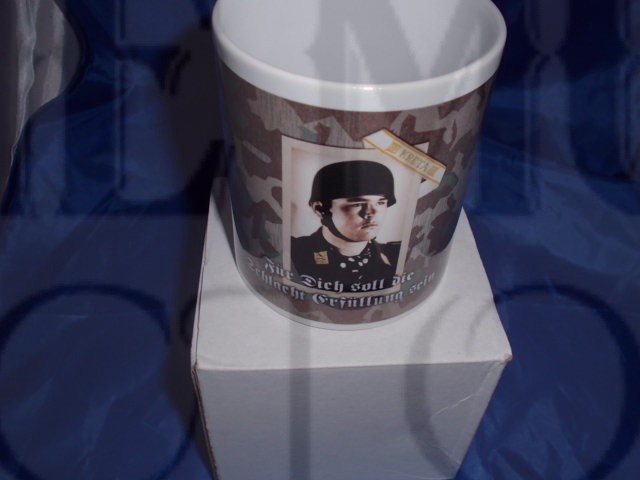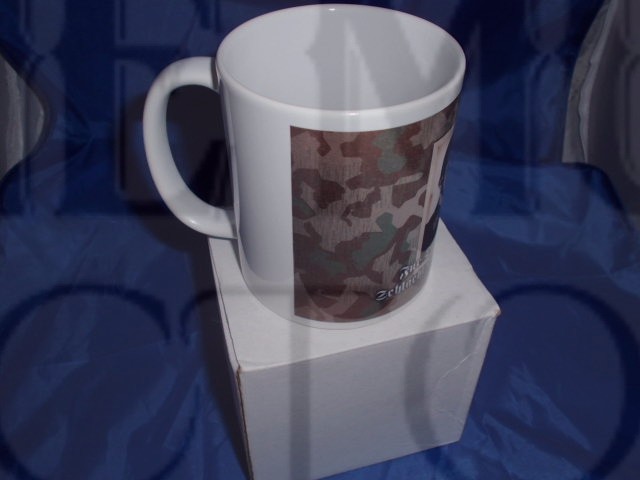Fallschirmjager Kreta military mug
11oz Fallschirmjager Kreta MUG
Fallschirmjäger is the German word for paratroopers. They played an important role during World War II, when, together with the Gebirgsjäger they were perceived as the elite infantry units of the German military. After World War II, they were reconstituted as parts of postwar armed forces of both West and East Germany, mainly as special ops troops.
German Fallschirmjäger in World War II were the first paratroopers to be committed in large-scale airborne operations. They came to be known as the "green devils" by the Allied forces they fought against.
Fallschirmjäger board transport aircraft for the invasion of Leros.
During World War II, the German Air Force (Luftwaffe) raised a variety of airborne light infantry (Fallschirmjäger) units. The Luftwaffe built up a division-sized unit of three Fallschirmjäger regiments plus supporting arms and air assets, known as the 7th Flieger Division. Throughout World War II, the Fallschirmjäger overall commander was Kurt Student.
Fallschirmjäger participated in the occupation of Norway and Denmark and in the battles of Belgium, the Netherlands and France in 1940. They also took part in the Balkans Campaign, Battle of Crete, Italian Campaign, and on both the Eastern Front and later the Western Front would follow.
The skillful airborne seizure of Fort Eben-Emael permitted the early capture of Belgium and, alongside successful operations in the Netherlands, was crucial for the speed of the German victories in 1940. The Battle of the Netherlands began on May 10, 1940 and ended in a German victory on May 14, 1940. German paratroopers had extreme success due to the element of surprise that occurred because of the unpreparedness of the Dutch. The Dutch were caught by surprise because of intelligence failures and miscommunication between important leaders of the Dutch military. Paratroopers played an important role in this victory because they were able to capture important targets such as the Moerdijk and Waalhaven airfields. Paratroopers also captured and defended the Moerdijk Bridge that allowed the Germans to gain a passage from Dordrecht to Amsterdam by train. This gave German soldiers an easier and quicker way important targets and to conquer the Netherlands. The major airdrops in Norway and Denmark in April 1940 were also vital to the success of the campaigns there, although they, along with the amphibious forces, suffered heavy casualties.
The Battle of Crete began on May 20, 1941 and ended on June 1, 1941. Crete was an important target for Germany because it provided territory close to the Mediterranean sea that could be used for offensive air and naval operations. German control over Crete would have also denied the Allied powers access to Germany's Ploiești oil fields in Romania where Germany gathered fifty percent of its oil. Germany launched a large-scale airdrops in which the entire 7th Air Division was deployed with the German 5th Mountain Division as the follow-up. Crete was captured after fierce fighting against the Allied troops, but the high casualties suffered by the Fallschirmjäger convinced Hitler that such mass airdrops were no longer feasible. High casualties occurred because the Allied powers knew of the Operation Merkur which meant the surprise effect, essential for the success of previous operations, was no longer possible on Crete. Allied soldiers set up anti-air defence against the paratroopers. This resulted in a high casualty count, over 3250 airborne soldiers killed or MIA and 3400 wounded. fallschirmjäger were awarded a total of 134 Knight's Crosses between 1940 and 1945.
The fallschirmjäger Divisions
After mid-1944, Fallschirmjäger were no longer trained as paratroops due to Nazi Germany's deteriorating strategic situation, and fought as infantrymen. Near the end of the war the series of new Fallschirmjäger divisions extended to thirteen on paper, with a reduction in quality in the later units. The last three divisions to be created (11th, 20th and 21st) were never fully formed and saw no combat.
The 1st Parachute Division was formed pre-war in 1938 and was the original 'elite' Fallschirmjäger unit. It was this unit that was responsible for all of the early German airborne victories. The division surrendered in Italy of 2 May 1945.
The 2nd Parachute Division was formed in early 1943 with a core of veterans from the 1st, fully trained it was also considered to be an 'elite' formation. It fought with distinction in Ukraine in late 1943. In 1944 the division fought in western France, taking part in the Battle of Carentan and around Saint Lo. The majority of the division was then cut off and surrounded in Brest and took part in the Battle for Brest, with ended with German surrender of the city in September 1944.
The 3rd and 4th parachute divisions were formed in late 1943, around a core of veterans from the 1st and 2nd. The 4th also contained Italian paratroopers from the 184th Airborne Division Nembo. The divisions fought on the Western Front and in Italy. The 3rd fought the Normandy Campaign and was cut off and nearly destroyed in the Falaise Pocket in August 1944. It was then reformed and saw action during the Battle of Arnhem, eventually surrendering to US troops in April 1945. The 4th fought exclusively on the Italian front including the Battle of Anzio, Rome and on the Gothic Line. It surrendered to Allied forces in April 1945.
The 5th, 6th and 7th divisions were formed in 1944 in France and fought on the western front as regular infantry. The 5th was the last division to receive near full Fallschirmjäger training and was one of the few German units to achieve its objectives during the Battle of the Bulge. 6th and 7th had an overall mixed combat performance. The 5th was largely captured in the Ruhr Pocket in April 1945, the 6th and 7th surrendered at the wars end in May.
- The 8th, 9th and 10th were Fallschirmjäger by name only, formed in 1945 from a disparate collection of Luftwaffe units, including ground crews. 8th fought in the Netherlands before being destroyed in the Ruhr Pocket. The 9th fought in the Battle of the Seelow Heights and in the Battle of Berlin before being destroyed in April 1945, the 10th survived until their surrender to Soviet forces in May 1945. The 11th, 20th and 21st were divisions on paper only; never fully formed, they saw no combat.









